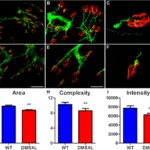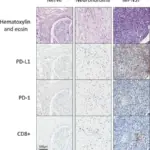Botulism is a toxin mediated disease of the neuromuscular junction.
What is the Pathology of Botulism?
The pathology of toxin-mediated diseases of the neuromuscular junction is the study of the toxins affecting the neuromuscular junction.
-Etiology: The cause of botulism is neurotoxins from food, or wounds acquired from rusted metal.
-Genes involved: NA.
-Pathogenesis: The sequence of events that lead to botulism, neurotoxins act on the neuromuscular junction causing blockade of the acetylcholine release leading to the abnormal function of the junction.
-Morphology: NA.
-Histology: NA.
How does Botulism Present?
Patients with botulism typically are both male and female present at the age range of 2-8 monthsThe symptoms, features, and clinical findings associated with botulism include nausea, vomiting, blurred vision, paralysis.
How is Botulism Diagnosed?
Botulism is diagnosed by stool specimen blood tests, physical examination and history taking.
How is Botulism Treated?
Botulism is treated according to the presenting symptoms, which may include respiratory support.
What is the Prognosis of Botulism?
The prognosis of botulism is poor with a mortality of 50%.



